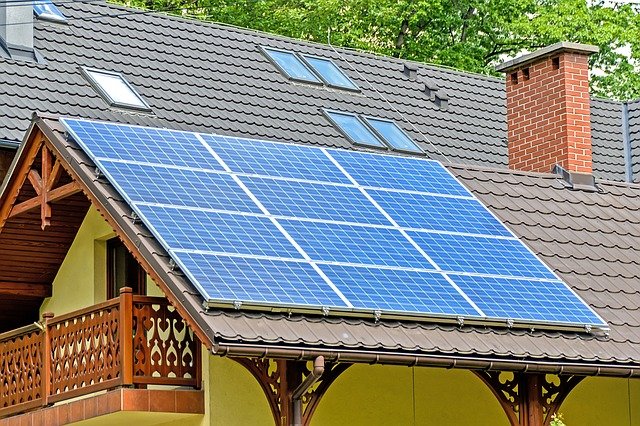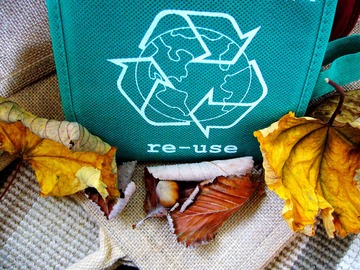The latest report according to the Intergovernmental Panel on Climate Change which UN Secretary General, Antonio Guterres, termed as ‘code red for humanity,’ warns of extreme weather conditions. Some of these include flooding, drought and heat waves, evidence of which we have seen recently in the flooding of China and Germany, and the heatwaves in Greece and western part of North America. But the consequence of global warming shouldn’t come as a surprise to anyone given the pace at which temperatures are rising both on the land surface as well as the oceans. The report mentioned a rise in global surface temperature recorded to be 1.09C higher between 2011 and 2020 than from 1850-1900.
Spread the Good Vibes
While it does seen very late to avert a climate catastrophe that is already upon us, with strong and sustainable efforts by the global community, aimed to cut back on emissions of carbon dioxide and greenhouse gasses known to spike global temperatures, starting with changes made to our individual lifestyles, there is a good chance we might be able to slow down its escalation. Instead of waiting for someone else to take the first step, we can initiate this ourselves. There’s enough evidence to show individual action is powerful, and has a ripple effect, worldwide. We’ve seen the far-reaching impact teenage climate activist Greta Thunberg has had, especially on the youth to believe every single person can make a huge difference.

Ideas and behaviour flow from one person to another, and researchers call this transmission ‘behavioural contagion’. In his book titled, Under the Influence: Putting Peer Pressure to Work, author Robert H. Frank writes about this, and calls individual action a potent force. He goes on to suggest that the social environment influences people as much as their own free will. He used as example the installation of rooftop solar panels by an individual can stimulate neighbours to follow in the same footsteps. And with social media at our disposal, social influence can bring about positive change. When people see someone taking steps to curb harmful greenhouse gases, they feel responsible to do the same.
Little Changes Go a Long Way
Thankfully, every individual is empowered in this matter. Simple lifestyle changes can go a long way in shrinking their carbon footprint, a bulk of which amounts from food, housing and transportation. It’s estimated that global food waste contributes to a huge chunk of the global greenhouse gases emitted world over. Growing food, processing, packaging and finally transportation, combined add to emissions of greenhouse gases. And when food is thrown away and rots in landfills, it yet again releases more dangerous gases like methane.

We can minimise our household food waste in some simple ways like planning meals in advance and buying only those ingredients that we need and not excess food that will go to waste. When we make use of the leftovers, and plan future meals based upon ingredients that exist in our pantry, we also reduce frequent trips to markets. Eat local because transportation and keeping food fresh in transit uses fossil fuels. Learn to cook dishes that make use of leftover food. The art of food preservation which include methods like pickling, drying, canning and fermentation give food a longer life. Better storage leads to less wastage. Know which food items are best stored at room temperature and those that need freezing. Perishable foods like fresh vegetables, meats and fruit need extra care to prevent premature ripening and rotting and separate foods that produce ethylene gas from other sensitive foods to prevent more spoilage.
Step Off the Gas
Travel constitutes another chunk of our carbon footprint, and one of the easiest ways to cut back on this emission is to travel only when it’s necessary. A study conducted by researchers at Lund University and University of British Columbia in 2017 suggests that a year of going carless can save 2.6 tons of carbon dioxide. But when travel is absolutely necessary, we can make sure we do the least damage to the environment. Use of public transport, carpool, or opting for climate friendly modes of transport is a smart choice. Some other minor changes that make a huge difference is how efficiently we drive and the condition of our vehicles. Well-serviced vehicle with tires properly inflated, no excessive baggage and use of air conditioning sparingly, is most desirable.
Unplug your Life
Our household power consumption is another area where we can manage sensibly. We often blame excessive power consumption as the reason for a large electric bill, but fail to regard the condition of household appliances and installation as partly responsible for wastage of power. In fact, we routinely overlook simple things like not disconnecting the phone and laptop charging cable from the socket or switching the lights off when not needed. All of these lead to power drainage. Green energy is a sustainable alternative, but it might not be possible for everyone to switch totally to green sources like solar power. But it’s possible to make a few minor adjustments to our consumption patterns like maintaining and using energy efficient household appliances and switching to LEDs that use a quarter of energy as compared to incandescent light bulbs.

Our digital habits, part of which is made possible by the electronic devices we operate, contributes more than we can imagine to our carbon footprint. To avoid this, find ways to extend your gadgets’ life. Buy electronic products certified by Electronic Product Environmental Assessment Tool and devices that allow multiple functions. We’re by now aware of the fast growing mountain of E-waste, and its disastrous consequences. The best one can do is be responsible in consumption and while disposing off E-waste. Recycling not only reduces E-waste, it also minimizes the use of resources needed to manufacture them. Some brands have the option to recycle old electronics for its customers.
Our life, our world and our future is in our hands.
Lesley D. Biswas is a freelance writer and children’s author based in Kolkata. Her interests include nature, bird photography and cricket.







